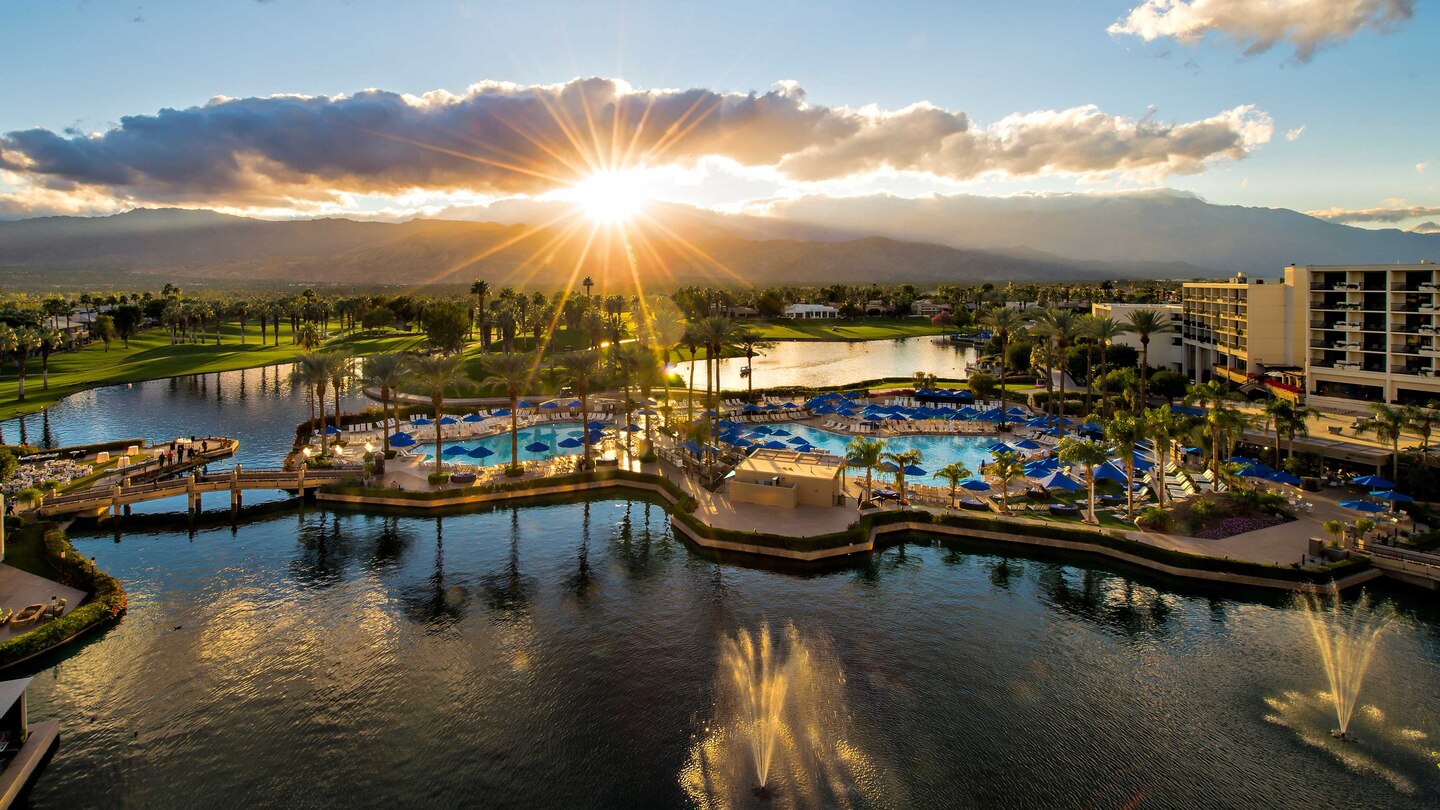
JW Marriott Desert Springs Resort
Golfers know that the Coachella Valley of California is one of the premium destinations to play the grand game in the world, an area replete with great courses, wonderful resorts and amenities that are second to none.
The area is home to 121 golf courses, making up more than 14 percent of Southern California’s golf stock, a figure that places the Valley as the most golf-centric region in the nation.
On the way to the “golf-course-on-nearly-every-corner “Coachella Valley, the Santa Rosa and Coral mountains dominate the horizon in the California desert. What’s not expected for first-time visitors here is how water – in the form of lakes, ponds, creeks and canals – infiltrates the line of play and adds testiness to the courses.
We teed it up on series of such aqueous tracks, the Palm course at the opulent JW Marriott Desert Springs Resort and the pair of glorious offerings at Desert Willow in Palm Desert and the two courses at the Indian Wells Golf Resort.
What we found is that, even though the terrain is relatively flat there’s a lot of variety, with water as much a factor as the desert’s sand and scrub brush and rock.

Indian Wells Golf Resort, Celebrity Course
Find your oasis at Desert Springs
The JW Marriott Desert Springs Resort is an oasis in the city of Palm Desert. This destination is a glittering world involving fine dining, hopping nightlife, spa, swimming pools and, amazingly in these arid climes, an indoor/outdoor lake with gondolas that ferry you around the property.
Golf course architect Ted Robinson, Sr. designed the Palm Course, which opened in 1986. Robinson, widely known as the “king of waterscapes,” incorporated 35 acres of streams, lakes and cascading waterfalls throughout the two 18-hole courses — Palm and Valley — at Desert Springs Resort.
The Palm has water on a dozen holes. You can lose a lot of balls if you’re not in tune with your game as some of the hazards aren’t readily visible, which makes the course a little tricky. Golfers get that watery flavor while entering the property. To the left of the main entrance is the par-3 third hole, which features a splashing waterfall.
The Palm layout offers a fairly typical resort-golf experience, with wide fairways, large putting surfaces and reasonable bunkering. The conditioning is first-rate. Additional hallmarks include fairways lined by its namesake trees and golfer-friendly mounding as well as multi-tiered putting surfaces and white-sand bunkers.
The generally raised greens slope from back to front and contain swales and tiers; bunkers, grass depressions and slopes serve as their protection. The Palm plays as a 6,761-yard, par-72 from the tips.
When a touch-up of the course was warranted, the resort decided to keep it in the family and asked the original designer’s son, Ted Robinson Jr., to handle the work in the summer of 2011. The younger Robinson didn’t adjust any of his father’s water features, but added new tees, bunkers with crushed marble sand and putting surfaces that are now all up to USGA specifications.
The Palm Course finishes with a stretch of four holes that would rival any closing sequence in the Coachella Valley. Perhaps the Palm’s prettiest hole is the 160-yard par-3 17th. The tee shot is all carry across over a waterscape with multiple colors. There’s a bunker at the back if you get too frisky with the tee ball.
The closer has been called the best finishing hole in the Coachella Valley by some locals. The 423-yard dogleg-left needs a drive that must carry the hotel’s main lagoon to reach the fairway. Guests at the spa’s pool area can watch golfers hit their approaches to a green fortified with railroad ties and guarded by sand and water.
The Palm is a fair and fun venue with several memorable holes. Though mostly benign off the tee, the numerous water hazards demand attention.
A unique aspect of the JW Marriott Desert Springs Resort is how close the main buildings are to the golf courses. It’s rare to find a resort where one can be in their hotel room or in a restaurant one minute and the next warming up on the driving range. The golf shop is actually a part of the hotel and it’s just a short cart ride to the range.
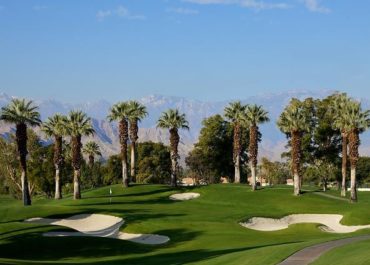
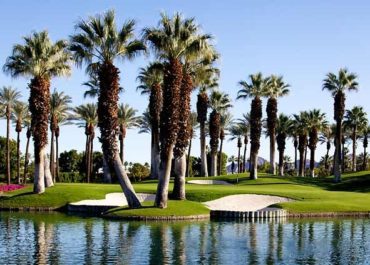

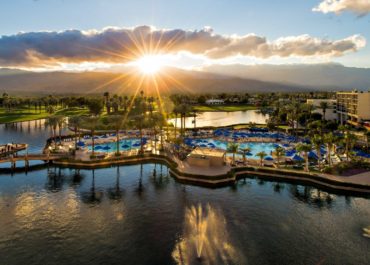
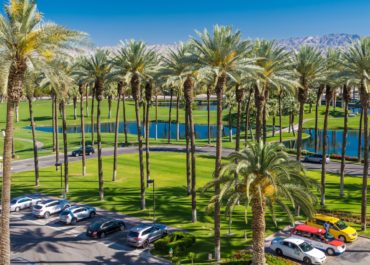


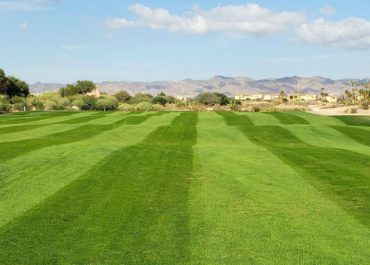
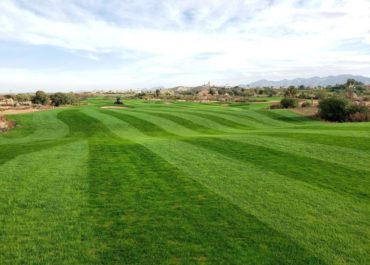
Two courses at Indian Wells Golf Resort are hard to beat
The real head-turner about golf here is that many of its best golf options are municipal courses owned or leased by the cities in which they’re located.
Such is the case at Indian Wells Golf Resort, which boasts a pair of tracks — both run by Troon Golf but owned by the city of Indian Wells — that are the match of any 36-hole resort anywhere. Indian Wells has had muni golf since 1986 with two courses designed by Ted Robinson. But both the original East and West were redesigned beginning in 2005.
Now called Celebrity (West) and Players (East), the two layouts are wildly different in appearance and playability. No expense was spared in the renovations, though Celebrity has a few more aesthetic touches and might be prettier to the eye. Waterfalls, ponds, lush plant life and palm trees are featured on each manicured venue. Players is tougher, longer and more traditional.
English architect Clive Clark redesigned the West course (Celebrity) and the new layout was unveiled to much fanfare in the fall of 2006. In addition to spectacular mountain views, the par-72 layout boasts wavy fairways and assorted water features in the form of streams, brooks and split-level lakes connected by splashing waterfalls, all surrounded with vibrant flora.
Clark’s alterations to the original course were dramatic. Bunkers (there are 97 now) range in size from small to massive and many are whale-tail shaped and contain brilliant white sand for excellent definition. Also, Celebrity‘s expansive putting surfaces are turfed with Tif-Eagle and quite contoured.
Many fairways are parallel and separated by vegetation and mounding that often creates a bowl effect. A local rule allows golfers to take a free drop if their ball ends up in any of the flower beds.
Water is another significant feature at Celebrity as 13 holes have hazards in play in some shape or form. Most of the wet stuff on the front side is along the periphery, but the home half has some beautiful and incredibly challenging water holes.
Celebrity stretches 7,050 from the tips. The course is quite narrow, but there are sufficient recovery opportunities near the greens, though the high-lipped fairway bunkers can be penal. It’s unusual with a routing with just one par-5 and one par-3 on each nine.
No. 15, the longest par-4 on the back at 471 yards, demands a tee shot over water, and the 180-yard par-3 16th is quite lovely. The finisher heads right to left toward a lake at its port side before ending at a huge, slightly elevated green.
The terrain is generally more rolling than at other Coachella Valley offerings. It is not a desert layout (anything but, in fact), and its side-by-side fairways provide more room than golfers might expect, adding up to a mostly friendly experience for all skill levels.
A year after the new Celebrity course debuted at Indian Wells, the refashioned East course — now called the Players — opened for play. Designed by former U.S. Amateur champion and PGA Tour player John Fought, the course features bunkers styled in the fashion of those at Riviera, Winged Foot and the Sandbelt courses near Melbourne, Australia, created by Alistair Mackenzie.
Fought integrated many stately trees on the property into the design to impart the feeling of an established track. Most of the holes are oriented to take full advantage of views of the San Jacinto, Santa Rosa and San Bernardino mountains; majestic Eisenhower Mountain stands sentinel to the south.
At 7,376 yards, the Players is 300 yards longer than Celebrity, though Celebrity’s tightness and more uphill approaches help even out the disparity. It’s markedly different from Celebrity in its parkland feeling.
Its Tif-Eagle greens are firm, vary in size and sport plenty of tilt. There are several large, waste-areas and some brutally long holes. The test begins at the 470-yard par-4 fourth, a gentle dogleg-right with a barranca down the right side. The green is elevated and protected by bunkers, making this a tough hole from start to finish.
Things aren’t easier at the 459-yard, par-4 sixth, where water guards the left side of the hole. With Eisenhower Mountain in the background, the tee shot is one of the more spectacular scenes at the course.
On the back nine the 186-yard, par-3 12th is also played toward Eisenhower to a green guarded by five menacing bunkers. The round concludes at an outstanding par 4 of 491 yards. A deep hazard guards the front and right sides of the green and four bunkers lurk long and left.
The better a golfer you are, the more you will enjoy Players. Those new to the game will find the course difficult with its up-and-down fairways, well-placed bunkers and water hazards.

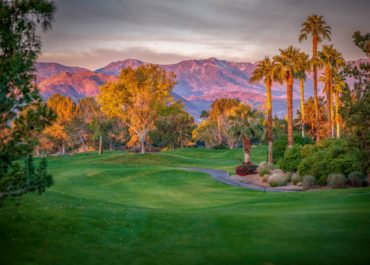


Desert Willow hits the mark with Firecliff and Mountain View
Sometimes keeping up can bring you down. But that’s not the case in Palm Desert, which is another one of several golf-endowed cities in California’s Coachella Valley.
About two decades ago, the city of Palm Desert found a way to keep in stride with the Joneses. Instead of just being happy with authorizing the building of “another” course to spur golfers to play in their town, city officials went one better – or, in this case, two – with a pair of 18-hole layouts at the municipally owned Desert Willow Golf Resort.
Designed by Dr. Michael Hurzdan and Dana Fry, with help from PGA Tour veteran John Cook, Desert Willow’s Firecliff and Mountain View courses opened in 1997 and offer 36 holes of splendid golf.
The Desert Willow facility is the result of years of planning by the city, much of which involved adhering to Mother Nature’s handiwork. Local landscape architect Eric Johnson was brought in to spread color around the grounds via the planting of environmentally sensitive, indigenous plants that require little water.
The golf courses are maintained like a top-notch private club, and the venue stays busy. But play moves along at a good pace, making an outing here almost fly by.
Desert Willow Golf Resort, operated by KemperSports, is as colorful as it is challenging. Firecliff is considered the tougher golf course, due mainly to its forced carries and potentially punitive water hazards. It also has more than 100 bunkers and a gaggle of waste areas than can have a stroke-adding effect during a round.
In comparison, Mountain View is more of a resort layout, with wider landing areas and only four forced carries (and those are over water and none involve undue length). But the fun at Mountain View begins when approaching its smallish putting surfaces, which have demanding surrounds that were added during a 2009 renovation.
The par-72 Firecliff plays 7,056 yards from its back set of five tees. There’s little room for error here as the rolling fairways are merely slender green corridors through the desert, so effectiveness off the tee is key.
All the tees at Firecliff have forced carries and there are a few holes, even from the white tees, that demand a 190-yard carry to find the fairway. For good players, that’s not really a big deal, but even those guys will have an occasional loose swing and will pay the price.
Firecliff rewards dead-on shot-making, and its mid-sized greens feature enough slope that they’re usually kept at lower Stimpmeter readings to allow multiple pin placements. The putting surfaces are well-protected, with water and heavy bunkering fronting many of them.
Sand in various forms enters play on virtually every shot at Firecliff, so be sure the sand wedge is cleaned and ready to go. The routing is enhanced by desert willows, bearded fan palms, acacia trees, oleander bushes and various cacti.
There is no easy-in to a round at Firecliff. The 535-yard par-5 opener (with eight bunkers near the landing area, at the second shot lay-up and beside the green) gets many golfers quickly acquainted with the task at hand. Target-golf aficionados will relish the 194-yard third, which plays across a tree-filled desert wash to a right-sloping putting surface ringed by five bunkers.
Hurzdan/Fry’s craftsmanship is illustrated at the 455-yard par-4 ninth, which sports a lake along the left of the fairway and green, and two bunkers right of the putting surface.
No. 17 is a 204-yard par-3 with water right and a tee-to-green waste bunker separating the lake from the fairway and putting surface. The closer is not – at 536 yards – super-long, but the par-5 is protected by a creek that squeezes the drive and brings water into play by the green.
Firecliff has to be counted as among the Coachella Valley’s most demanding venues, a target-golf test that will take its pound of flesh.
Meanwhile, the Mountain View course, also a par-72, has five sets of tees, the longest of which plays at 6,913 yards. A 2009 remodel included a complete reconstruction of the greens and bunker complexes, as well as a renovation to the lakes in an effort to regain contours lost to winds and erosion.
Mountain View has its moniker for a reason – of the two tracks at Desert Willow, it offers the best vistas.
The course rolls through the desert with larger landing areas than Firecliff, and the bunkers are not as plentiful as at its big brother next door. Few are located directly in front of the greens, which usually have open fronts that are conducive to running chips and pitches.
Water hazards enter play on seven holes, some cutting closely in front of the greens. Mountain View is a great golf course for players who like to bomb the ball off the tee and is indeed friendlier than its neighbor, but it should not be taken lightly. From the tips, this is still a tough test, mostly due to its small greens.
The fifth hole, a 227-yard par-3, is a good example of the use of greenside waste areas. Here, the hazard runs down the right side of the hole and turns into a deep bunker before the green.
On the inward half, the 200-yard, par-3 11th has a way of humbling even the best as the tee shot is a total carry over a pond. The bailout area to the left sports a huge, clover-shaped bunker and is not a good option.
No. 15 at Mountain View is a dogleg-left, 386-yard par-4 where the correct play is an aggressive line over the elbow, which holds 10 small but deep bunkers. The approach is tricky because of a well-contoured green.
Mountain View’s closing hole is a par-5 that stretches 538 yards, with sand trouble off the tee. Both the second and third shots need to traverse water. It’s a hole where options abound, epitomizing the experience at Desert Willow Golf Resort.
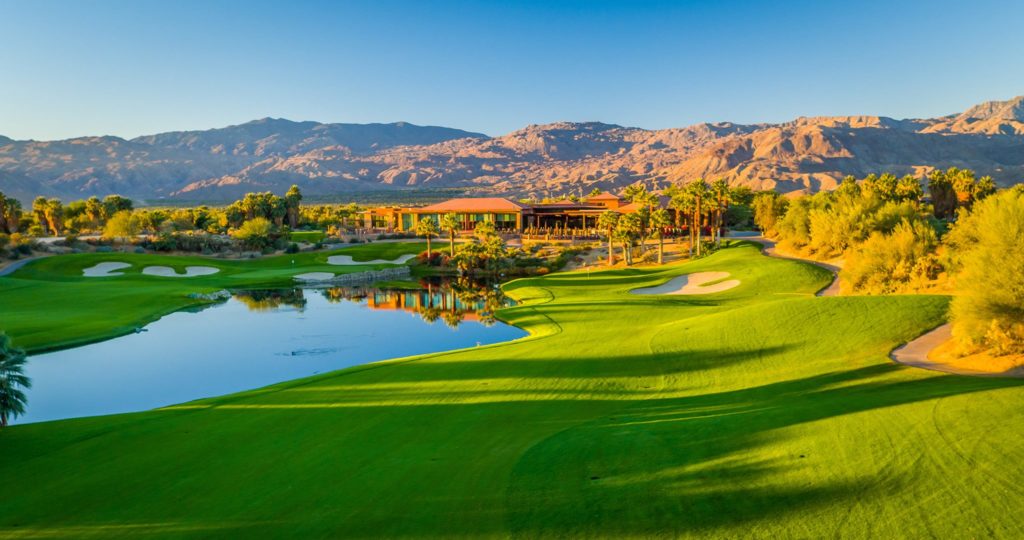
Desert Willow Golf Resort

